
Related
Topics
Alejandro Toledo was inaugurated as Peru’s president Saturday, promising a government “at the service of the people” and free of the corruption and human rights abuses that marked the rule of his predecessor, Alberto Fujimori. Toledo pledged to fight poverty in the Andean nation by funding rural schools and health clinics. He also proposed a reorganization of the country’s notorious armed forces to place them under firm civilian control. [includes rush transcript]
But Toledo did not say what he planned to do for the hundreds of imprisoned Peruvians who were tried and sentenced by the country’s infamous military courts, with their hooded judges, secret evidence and no due process.
It was one of these courts that sentenced US activist Lori Berenson to life in prison more than five years ago on charges that she was a leader of the MRTA, the Tupac Amaru Revolutionary Movement, a group classified as terrorist in Peru.
For three years, Berenson was held in the frigid Yanamayo prison in the Andes mountains in an unheated, open-air cell without running water, where her hands swelled like boxing gloves from the cold and altitude, and she developed gastric and eye problems. She was later transferred to the Socabaya prison, but there too she was held in complete isolation for many months. It was there that I interviewed Lori in March of 1999, her first interview with a journalist. We broadcast excerpts a year and a half later when she was moved to a Lima prison and we felt it was safe to air her words.
Berenson was transferred to Lima after the Peruvian military voided her life sentence and ordered her retried in a civilian court on reduced charges of collaborating with the MRTA. Lori Berenson continues to deny the charges. Last month, she was convicted and re-sentenced to twenty years in prison.
Today, Democracy Now! again breaks the sound barrier. We sent Lori Berenson a series of questions, and over the next three days you’ll hear her answers from the Chorrillos prison in Lima, Peru.
The sound isn’t optimal, but these are the conditions under which she was able to do the interview. She begins by saying she is grateful for the opportunity to give this interview, but that she is hoarse from throat problems. Please listen carefully.
Tape:
- Lori Berenson
Related link:
Transcript
AMY GOODMAN:
Alejandro Toledo was inaugurated as Peru’s president Saturday, promising a government “at the service of the people” and free of the corruption and human rights abuses that marked the rule of his predecessor, Alberto Fujimori. Toledo pledged to fight poverty in the Andean nation by funding rural schools and health clinics. He also proposed a reorganization of the country’s notorious armed forces to place them under firm civilian control.
But Toledo did not say what he planned to do for the hundreds of imprisoned Peruvians who were tried and sentenced by the country’s infamous military courts, with their hooded judges, secret evidence and no due process.
It was one of these courts that first sentenced US activist Lori Bersenson to life in prison more than five years ago on charges that she was a leader of the Túpac Amaru Revolutionary Movement, or MRTA, a group classified as terrorist by the Peruvian regime.
For three years, Berenson was held in the frigid Yanamayo prison in the Andes mountains in an unheated, open-air cell without running water, where her hands swelled like boxing gloves from the cold, and she developed gastric and eye problems. She was later transferred to the Socabaya prison, lower altitude, but there too she was held in complete isolation for many months. It was there that I first got to interview Lori in March of 1999. We broadcast that interview, the first time her voice was heard since she was sentenced to life in prison, a year and a half later, in September of 2000, after she was transferred to a prison in Lima and we felt she would not be endangered by her voice being heard.
After intense international pressure, the Peruvian military voided Lori’s life sentence and ordered her retried in a civilian court on reduced charges of collaborating with the MRTA in planning an attack on the Peruvian Congress. Lori Berenson continues to say she is innocent of the charges. But in June, she was convicted and resentenced to twenty years in prison.
Democracy Now! today again breaks the sound barrier. We sent Lori Berenson a series of questions, and over the next three days you’ll hear her answer from the Chorrillos prison in Lima, Peru. It is the first time that people will hear her voice since she was sentenced. The sound isn’t optimal, but these are the conditions under which she was able to do the interview. She begins by saying she’s grateful for the opportunity to give the interview, but that she’s hoarse from throat problems. Please listen carefully.
LORI BERENSON: I’m grateful for this opportunity to be able to give an interview. Sorry to say, I’m extremely hoarse — throat problems — so I hope my voice is at least understandable. I’ll read the questions and then give the answers.
AMY GOODMAN: She says she’ll read the questions and give the answers.
LORI BERENSON: “What was your reaction to the Peruvian court’s verdict against you?”
OK, well, there, on one hand, it was pretty much announced since the very day the retrial started that I was going to receive a high sentence, although I perhaps had the hopes that someone would be more logical when they dealt with the trial itself, taking into account that they were not abiding by international standards. They weren’t even abiding by the Constitution. They never changed the antiterrorist laws, and there was a sentence in the Inter-American Court that said they needed to change the antiterrorist laws. But they didn’t, and that’s what I was tried by. So, I guess, in spite of the fact I did have the hopes they wouldn’t do that, it was pretty much announced that I was going to get a sentence and I was going to get a high one. The sentence I received was received on what is called criteria of conscience, or criterio de conciencia, which means with lacking proof or lacking evidence, they take a decision, basically.
Going to the second question, “Did you consider the second trial any more legitimate than the first? What were the differences? What were the similarities?”
I’d like to begin here saying that the big difference between the second trial and the first was that the second was in a civilian court — the first was in a hooded military court — that, in my particular case, that meant it was an open trial, it was open to the press and the public in the oral trial phase, whereas in the military court, it was definitely a closed trial, where my lawyer was able to give his defense after I was already sentenced. Basically, that’s the — and I will say, the military court trial, you know, we were lined up in a room with soldiers behind us and read a sentence. That was the trial. So I will say there is a difference in that sense. I was questioned.
Now, in terms of whether or not it’s more legitimate, that is always a relative term. I do believe that the fact that it was open unfortunately was not used in a way that would necessarily be helpful to the defense, in the sense that, strangely, whenever the defense presented anything important, or whenever the defense presented the defense, like the last — one of the last days in court was my lawyers presenting our case, and the press did not cover it at all, whereas they did cover it when the prosecutor did so or when the state prosecutor did so the days before. So I think, in that sense, the fact that the press is allowed to be present doesn’t necessarily mean that public opinion is enabled to see what really happens.
In terms of differences, I think I more or less touched that. Unfortunately, the similarities are many. It’s the same legislation that a dictatorial regime put into place in a state of emergency. The antiterrorist laws are exactly the same ones that were put into place in 1992. That means that in spite of the fact that perhaps being an open trial — and in those days even civilian trials were with hooded civilian judges — even so, the limits of the framework of the legislation did not enable for due process, really.
There were other issues, such as the way the judges acted, in the sense that they basically took over the job of the prosecutor, which is unusual. The judge made his conclusions during the trial itself. I was guilty since — if I was already guilty since before the whole thing started, when ex-President Fujimori said I was going to receive twenty to thirty years, I believe was his statement, the very day my case was bumped out of the military court — in this case, this is, you know, the main judge, Dr. Ibazeta, had already given opinion on my case years earlier. He’s a person who had been a witness to the OAS, a witness called in by the Peruvian government of Alberto Fujimori, called into the OAS to testify in the case of Baruch Ivcher, if I’m not mistaken, in 1998, if I’m not mistaken. Also was called in to testify on judicial reform, to defend it, in the Inter-American Court. In that sense, I think I had a selection of non-impartial judges or very partialized judges. And that, in itself, is not — doesn’t have much to do with any — much of anything to do with due process.
The other similarity is that they used the exact same information as the basis of the trial. It was the police testimonies and the police — the so-called police investigation, which is basically the declarations of other fellow detainees. And the entire military sentence, that entire process was used and was the basis of the entire process in the civilian court. So, in terms of new evidence or allowing defense to bring in new evidence, it was a lot of limitations.
In terms of witnesses that were brought to the trial, unfortunately, the witnesses were not well treated by the judges whenever they did not act the way they, I guess, they wanted, when they didn’t say what they wanted to hear. Even their own witnesses, the witnesses that the court itself called in, were not well treated, were actually mistreated. One of the judges would say, you know, “You’re under oath, you’re under oath.” It was two witnesses they brought in that they repeated, “You’re under oath,” at least four or five times, and saying, you know, “You’re not looking at the pictures. Do you know who this is? Are you sure that happened?” You know, just a very aggressive attitude, which I think has a lot to do with their already preconceived notion of what they wanted to hear, if they didn’t hear it.
Now I’m not sure if it got to the point of whether or not they actually talked to the witnesses about what to say. There’s one case — particularly one of my fellow detainees gave a declaration that was extremely — it was very unusual, and that he had never mentioned before. And it was absolutely unreal. It made a mention that I always read the economics section of the newspaper and that I was always interested in the stock exchange, which is absolutely untrue. I’ve never read the stock exchange in my life, I think. And that was used by the judge to say, “Oh, so that means she was interested in the Brady bonds,” because there was this document that was called Plan Brady, which they said that there was handwriting on it similar to mine. So, basically, that gave me the impression that that was already something they had discussed with this fellow detainee.
At any rate, unfortunately, the main similarity in both of the trials I’ve gone through is the injustice, lack of evidence, and predisposition to sentence me, to condemn me.
I’m going to the third question.
AMY GOODMAN: And we’re going to get to that third question after we break for stations to identify themselves. You’re listening to the voice of Lori Berenson. She’s being heard here for the first time since she was sentenced in June to twenty years by a Peruvian court. We’ll be back with this exclusive in just a minute.
[break]
AMY GOODMAN: You are listening to Democracy Now!, the Exception to the Rulers. I’m Amy Goodman.
Last week, more than 140 Congress members sent the interim president of Peru an appeal to free Lori Berenson, who was sentenced by a Peruvian court last month to another twenty — to twenty years in prison, of which she has served five. She would be released November 29th, the year 2015. Also, Senators Schumer and Clinton of New York sent a separate letter asking for her to be released on humanitarian grounds. The interim president, Paniagua, did not do this, and on Saturday the new president of Peru was inaugurated, Alejandro Toledo.
Today, we break the sound barrier with a Democracy Now! exclusive, and that is Lori Berenson responding to questions from her prison in Lima, the Chorrillos prison, questions that Democracy Now! sent down to her. And she reads the questions, and then she answers them. The sound quality is not optimal, obviously, under these prison conditions, so do listen carefully. We will be playing the rest of this interview today, tomorrow and Wednesday. After the segment with Lori, we will go to Italy to talk about the aftermath of the violence in Genoa. This is, though, Lori Berenson.
LORI BERENSON: “The Peruvian government reduced the charges against you from being a terrorist to being a collaborator. They said you knowingly rented a house for the MRTA and that you posed as a journalist to scope out the Peruvian Congress and help the MRTA to plan a terrorist attack. How did you respond to these charges?”
First of all, the fact that I am being charged of collaboration doesn’t mean I’m not being charged as a terrorist. It’s a charge under the terrorism laws, and it still means that I am being considered a terrorist, make the [inaudible], in any case. They said they couldn’t prove that I was a member of the MRTA, but that doesn’t mean that I’m any less of a terrorist, just to clear up that point in terms of their language they use.
“Knowingly rented a house for the MRTA,” there is absolutely no proof of that, and I have denied that. I didn’t intentionally rent the house for the MRTA. “Posing as a journalist” is absolutely off the wall. I had real journalistic credentials, and I was really writing articles. The thing about scoping out the Peruvian Congress is also off the wall. I don’t even know what I’d be scoping out for. Nothing I ever discussed with anyone. I used to go in and sit in a room where all journalists sat and did the kind of things that all journalists used to do. There was absolutely nothing that I have done that would make it seem like I’m scoping out anything. “Helping the MRTA to plan a terrorist attack” is obviously as a result, a consequence, of what I’ve just said, is also off the wall. I’m certainly not involved in that. Obviously, my response to all these charges has been my innocence, and I still sustain that.
Fourth question: “Can you talk about your views on terrorism and your views on the MRTA?” “Do you think if you had condemned the MRTA, it would have made a difference in your trial?”
OK, the way I understand, “terrorism” is a concept that means indiscriminated violence, destructive — destructive, random violence used to terrorize — to create terror, basically — is my feeling of what terrorism is. Of course, I do condemn terrorism. The difference that I see between terrorism in the MRTA is I see that the MRTA is part of a process that has happened in probably all Latin American countries and many countries all over the world, where rebel movements or insurgent movements arise on the basis, usually, of political economic situations — principally, economic situations — different forms of abuse and exploitation that people confront, and they either — different kinds of protest movements, either in terms of mass movements, you could call it, or even armed movements have surged in many places of the world. It is in that context that I have seen and understood the MRTA, which is why I have always distinguished them from what would be called a terrorist group. I don’t there. As far as my understanding goes, they would fit into the category of basically any rebel movement that I have read about — in Latin America, at least. That’s basically — that was my understanding of what they were at the time of my detention, more or less the same understanding I have now, with the years I’ve been in jail.
The question here, “Do I think, had I” — had I condemned the MRTA, I would probably be free now. I say that because one of the things that basically is — I think my freedom would have been contingent on condemning the MRTA and saying that they had either used or threatened or obliged me to do I don’t know what, and on the issue of condemning and admitting my guilt in something. That’s basically, to me, the way I probably would have gotten out. Obviously, getting out on the basis of going against my principles, because I have no reason for condemning — I have no reason. It’s not up to me to condemn anybody, and I can’t blame people for things they haven’t done, much less so if I were to do so to try to get out. I think that’s unconscionable. It goes against my moral values.
Going to the next, asked for this: “Summarize my final statement in court.”
OK, my final statement in court was a pretty long one. I would divide it on topics that had a lot more to do with my case and other things, that it’s more to do with the political context in which my case is occurring. I talked about my innocence in the charges against me. I went charge by charge, explaining why I was innocent of each charge. I also talked a lot about the political context in the sense of how my trial had been before, what — the whole lack of due process, how that trial, those military trials, or even civilian trials in hooded courts, meant no due process and brought so many, so many people to jail in such horrendous conditions. It talked about all the human rights abuses, torture, etc., that had existed and have been actually the majority of cases in these years.
Then I talked about issues of how my trial was a political trial, basically for two reasons. One is because in the case of political violence, although the reason for political violence probably has more to do with economic situations, the response to political violence is a state response, and it is a policy, and it’s political. So that is why I believe that in any trial against someone charged with this kind of so-called crime would be considered — it would be considered a political trial. But on top of that is the fact that most cases, especially mine, have been used as a smokescreen, have been used reiteratedly during the previous government, and even through this government, as a smokescreen to create public opinion, basically that whole image factor.
And here’s where I also remembered that, historically, not only here, it’s a process that has been seen in most countries where there have been authoritarian regimes or dictatorships, is the use of public opinion, basically the manipulation of public opinion to believe things that aren’t true. And that is certainly the whole policy of disinformation around the issues of political violence in Peru. It’s, to date, a very difficult situation, because what is truth in that sense? The public has been fed such a story for so many years that it’s very hard to change that.
I then again mentioned the issue of the word “terrorism” and also the need of understanding what has happened in the past, the real truth about what has happened in the past. In order to be able to construct a future, it’s necessary to understand the past. And in that sense, if there has been violence that could be labeled or conceived as terrorist violence, it should be cleared up who committed it and the magnitude of it. Being that they, by generalizing the concept of “terrorism,” they’re putting — basically summing up a series of violence that has been committed by the state, paramilitary organizations and subversive organizations, and it’s not clear as what is terrorism and what is not. And I think it’s necessary to know that in order for a society to go on. It’s necessary for them to know what their real path has been.
I discussed somewhat about the context of the antiterrorism laws that were decreed in a state of emergency with a series of other unconstitutional laws, the closing of the legislative branch of government, the closing of the universities, the closing of all political spaces, and really tremendous human rights violations. In that sense, it’s what I mentioned in trials and such.
I mentioned issues about the negative image I projected in my press presentation and that I was sorry of having projected such an image. But I explained why. It has a lot to do with the suffering not only of the Peruvian people in general, because of hunger and misery, or only the suffering that I was aware of that had happened, the torture and deaths, even, that have happened in police forces’ headquarters and in army headquarters, but also the torture of one my fellow detainees who, through really serious medical negligence, was not correctly treated, a form of torture. Well, basically that would be the summary of that.
In terms of explaining the situation of violence that I had seen, I had mentioned the relation between political violence and what could be called the structural violence or the violence of hunger and misery and exploitation. And that is when I mentioned the cases of several martyrs of basically the Catholic Church, but the Church, in general, people who had decided to take the preferential option for the poor. And that is where I mentioned the case of people I much admire, martyrs such as Archbishop Romero and Bishop Gerardi, for defending the poor and defending the truth, and how that taught me to not keep quiet when I see injustice. I think that is something, when one silences or does not denounce injustice, they wind up converting themselves into accomplices of injustice. And that’s something I’ve learned in my upbringing, to a certain extent. I even believe that it’s something my parents, my family, and friends still believe in, and that’s probably the reason they actually support me, which is something I thank and even thanked in court.
And at the end, I made a reference to a lot of the questions they had made to me, which were called basically “value” questions — not questions on facts, but questions on my way of thinking about things. And specifically, there were a lot of specific questions about, like, the music of Victor Jara, or did I — why I work with the Salvadorans, or why did I go to El Salvador, and all that kind of thing. And basically, what I said is that I have said this all honestly, this is my way of thinking, my way of looking at life. I have nothing to be ashamed of. I’ve actually been quite honored to have worked with the Salvadorans I have worked with, albeit students, albeit religious people, and working on the peace process itself. It was certainly an honor for me to work on all of that, and I have nothing to be ashamed of, of having worked with either people I’ve worked with, with the now-Congressman Salvador Sánchez Cerén, or with anybody, really, and basically explained, you know, none of that makes me guilty of a crime. I have committed no crime.
And I closed expressing that I still have a great love for Latin American people and for the Peruvian people, and I still have a lot of hope for the change for the better in all of these countries, especially in Peru. That is, more or less, the summary of what I said that day in court.
AMY GOODMAN: Lori Berenson, speaking from the Chorrillos prison in Lima, Peru. She was sentenced last month by a Peruvian court to twenty years in prison and would be released November 29th, 2015, unless she is pardoned or in some way released or her sentence commuted before that time. This is the first part of a three-part interview that we did with her as she read the questions we sent to her. It is the first time her voice is being heard since she was sentenced in June.
You are listening to Democracy Now! Tell your friends about the exclusive and encourage them to listen tomorrow and the next day, as well. If you missed any part of it, you can go to webactive.com to hear Lori Berenson speaking for herself.

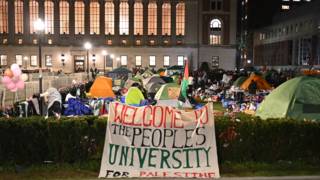
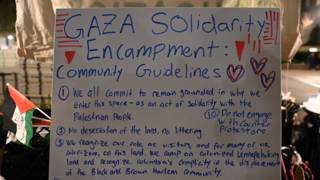
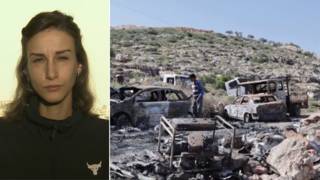
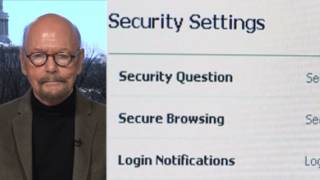





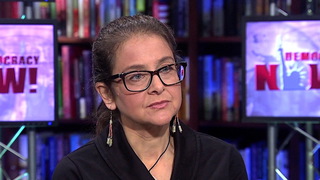
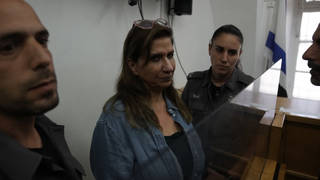
Media Options